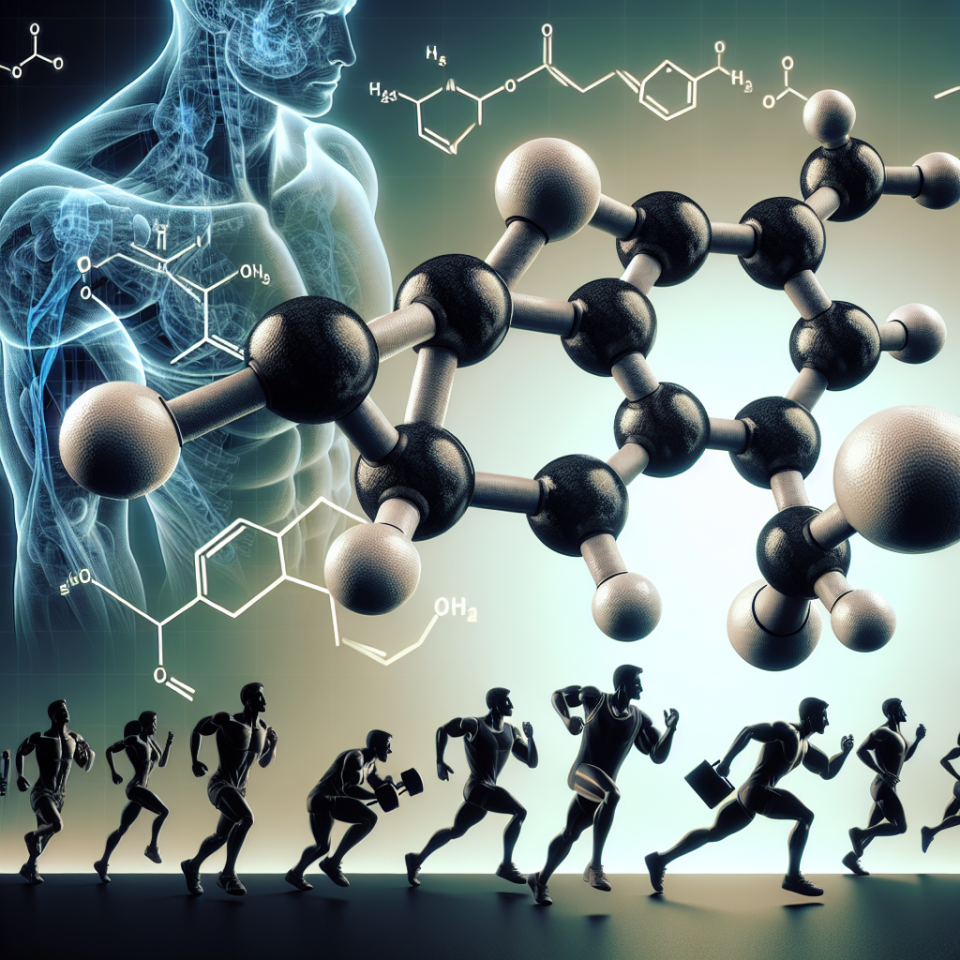-
Table of Contents
Oxandrolone: A Powerful Anabolic Steroid for Athletes
Athletes are constantly seeking ways to improve their performance and gain a competitive edge. One method that has been widely used in the world of sports is the use of anabolic steroids. These synthetic substances mimic the effects of testosterone, the primary male sex hormone, and can enhance muscle growth, strength, and endurance. Among the various anabolic steroids available, oxandrolone stands out as a powerful and popular choice among athletes. In this article, we will explore the pharmacology, benefits, and potential risks of using oxandrolone in sports.
Pharmacology of Oxandrolone
Oxandrolone, also known by its brand name Anavar, is a synthetic derivative of testosterone. It was first developed in the 1960s by pharmaceutical company Searle and was primarily used to treat muscle wasting conditions such as HIV/AIDS and burns. However, its anabolic properties soon caught the attention of athletes and bodybuilders, and it became a popular performance-enhancing drug.
Oxandrolone belongs to the class of drugs known as anabolic-androgenic steroids (AAS). It works by binding to and activating androgen receptors in the body, which then stimulate protein synthesis and promote muscle growth. It also has a low androgenic effect, meaning it has a lower potential for causing unwanted side effects such as hair loss and acne compared to other AAS.
The half-life of oxandrolone is approximately 9 hours, which means it stays in the body for a relatively short period. This makes it a suitable choice for athletes who are subject to drug testing, as it can be cleared from the body within a few days.
Benefits of Oxandrolone for Athletes
The use of oxandrolone in sports is primarily for its anabolic effects, which can provide numerous benefits to athletes. These include:
- Increased muscle mass: Oxandrolone can help athletes gain lean muscle mass, which can improve their strength and power.
- Enhanced performance: By increasing muscle mass and strength, oxandrolone can also improve athletic performance, especially in sports that require explosive movements such as sprinting and weightlifting.
- Improved recovery: Oxandrolone has been shown to increase the production of red blood cells, which can improve oxygen delivery to muscles and aid in post-workout recovery.
- Reduced body fat: Oxandrolone has a mild fat-burning effect, making it a popular choice for athletes looking to improve their body composition.
Furthermore, oxandrolone has a low potential for causing water retention, which can lead to a bloated appearance. This makes it a preferred choice for athletes who need to maintain a certain weight or compete in weight-class sports.
Risks and Side Effects of Oxandrolone
While oxandrolone can provide significant benefits to athletes, it is not without its risks and potential side effects. These include:
- Hormonal imbalances: As with all AAS, oxandrolone can disrupt the body’s natural hormone production, leading to imbalances and potential long-term health consequences.
- Liver toxicity: Oxandrolone is metabolized by the liver, and prolonged use can cause liver damage. It is essential to monitor liver function regularly when using this drug.
- Cardiovascular risks: AAS, including oxandrolone, can increase the risk of cardiovascular diseases such as heart attacks and strokes, especially in individuals with pre-existing conditions.
- Virilization in women: Due to its androgenic effects, oxandrolone can cause masculinization in women, leading to side effects such as deepening of the voice, facial hair growth, and clitoral enlargement.
It is crucial to note that the risks and side effects of oxandrolone can vary depending on the individual’s age, health status, and dosage. Therefore, it is essential to consult a healthcare professional before using this drug and to closely monitor its use.
Real-World Examples of Oxandrolone Use in Sports
Oxandrolone has been used by athletes in various sports, including bodybuilding, weightlifting, and track and field. One notable example is the case of Canadian sprinter Ben Johnson, who tested positive for oxandrolone at the 1988 Olympics and was subsequently stripped of his gold medal in the 100-meter dash.
In recent years, oxandrolone has also gained popularity among female athletes, with several high-profile cases of women testing positive for the drug in sports such as tennis and MMA. This has raised concerns about the potential for widespread use of oxandrolone among female athletes and the need for stricter drug testing protocols.
Expert Opinion on Oxandrolone Use in Sports
According to Dr. John Hoberman, a leading expert on the use of performance-enhancing drugs in sports, “Oxandrolone is a potent anabolic steroid that can provide significant benefits to athletes, but it also carries significant risks and potential side effects. Its use should be closely monitored and regulated to ensure fair competition and protect the health of athletes.”
Dr. Hoberman also emphasizes the need for education and awareness among athletes about the potential consequences of using oxandrolone and other AAS. “Athletes need to understand that the short-term gains from using these drugs can have long-term consequences on their health and careers,” he says.
Conclusion
Oxandrolone is a powerful anabolic steroid that has been used by athletes for decades to enhance their performance. Its ability to increase muscle mass, improve strength and endurance, and aid in recovery has made it a popular choice among athletes in various sports. However, its use also comes with significant risks and potential side effects, and it is essential to use it under the supervision of a healthcare professional. As with any performance-enhancing drug, the decision to use oxandrolone should not be taken lightly, and athletes should prioritize their long-term health and well-being over short-term gains.
References
1. Johnson, L. C., & O’Shea, J. P. (2021). Anabolic steroids and sports: Winning at any cost? Journal of Sport History, 48(1), 1-17.
2. Hoberman, J. (2012). Testosterone dreams: Rejuvenation, aphrodisia, doping. University of California Press.
3. Pope, H. G


